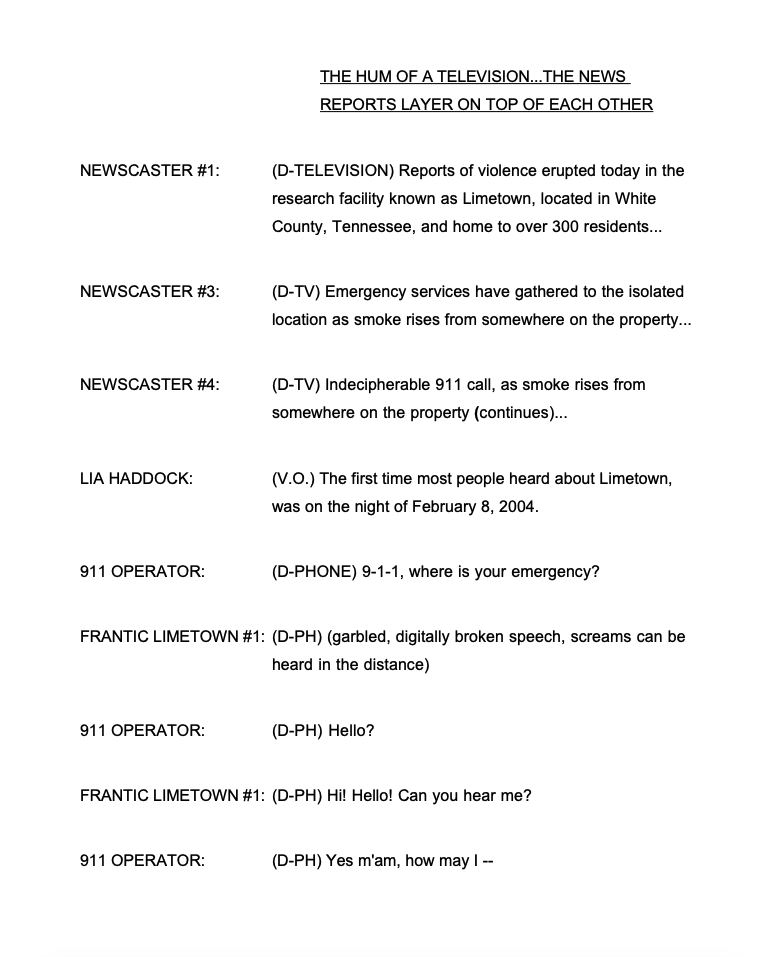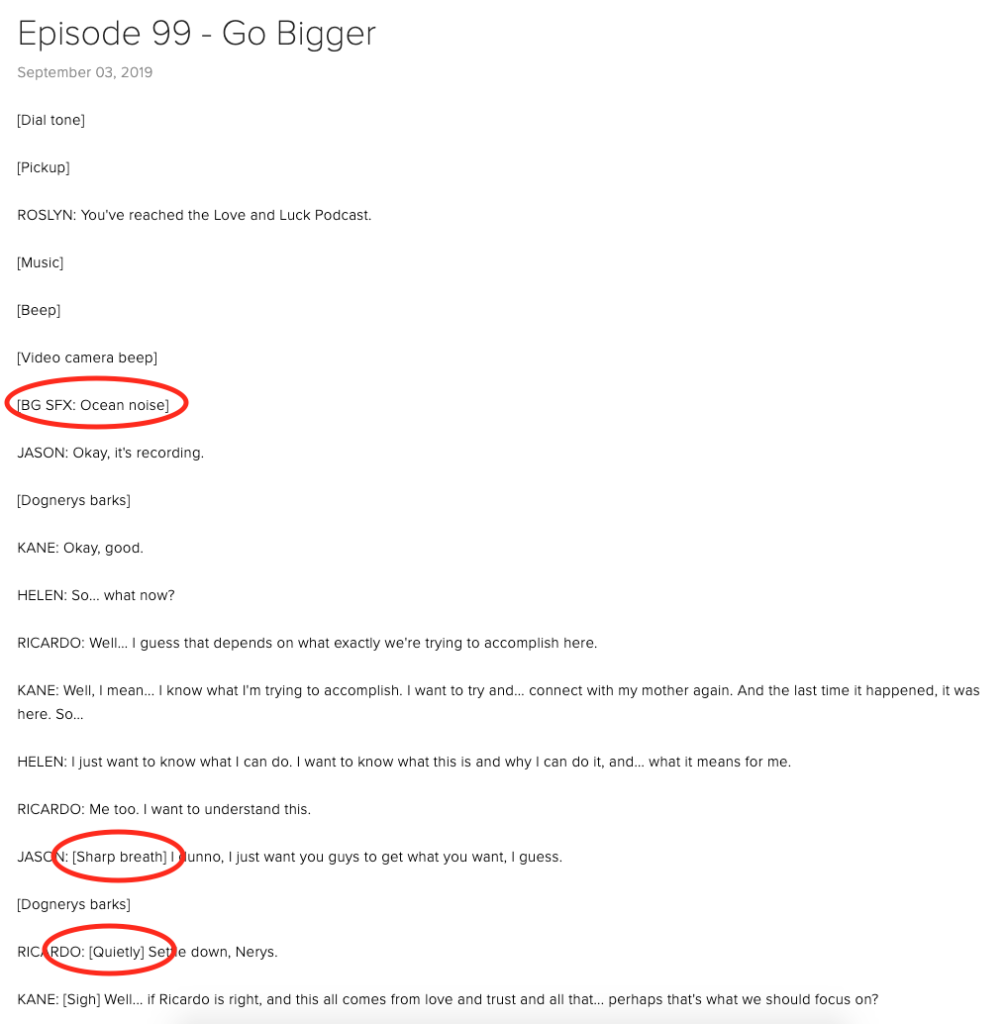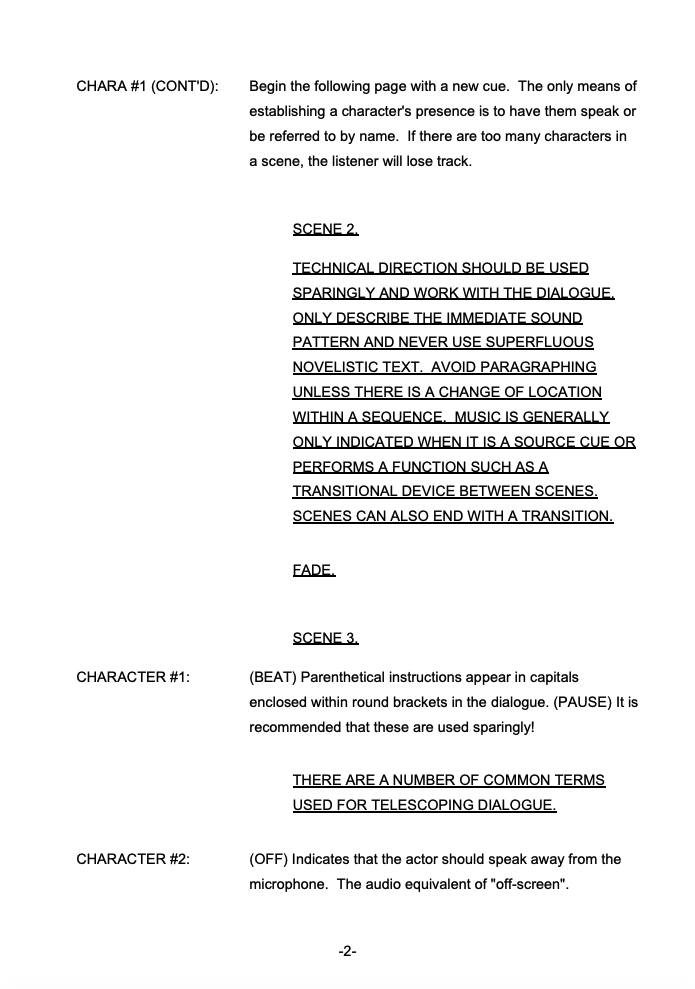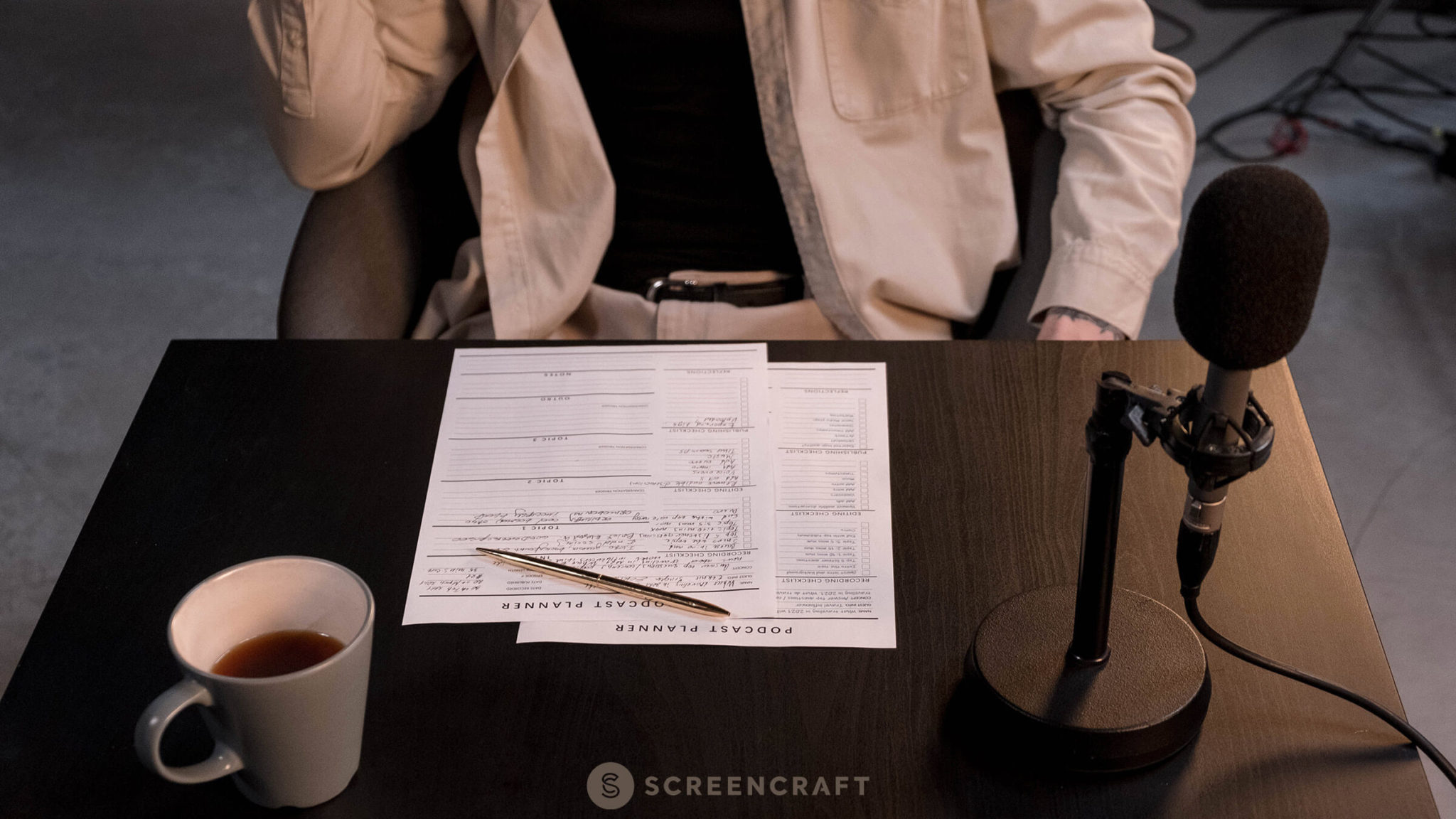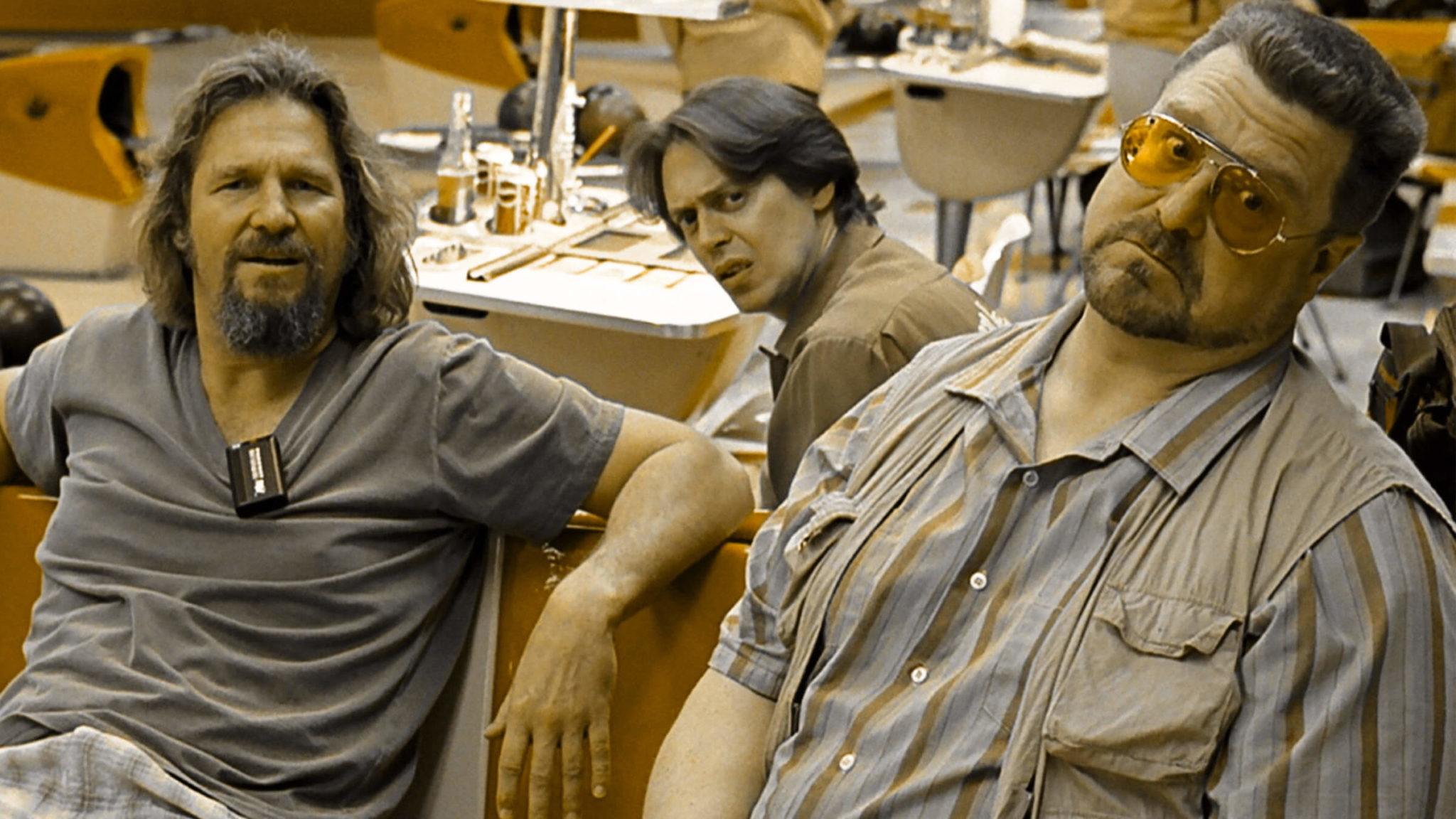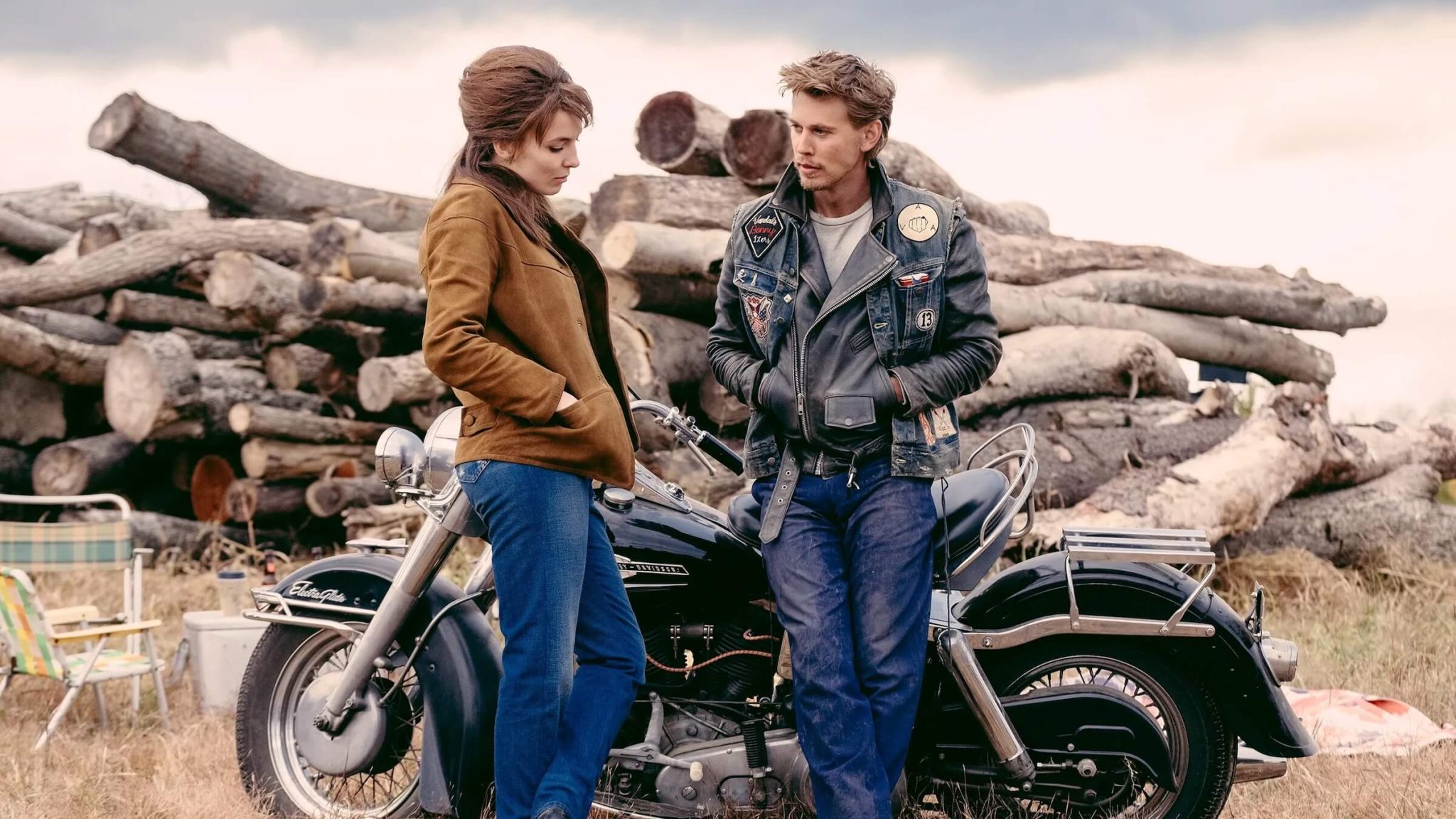How to Write a Podcast: 4 Ways to Format a Podcast Script
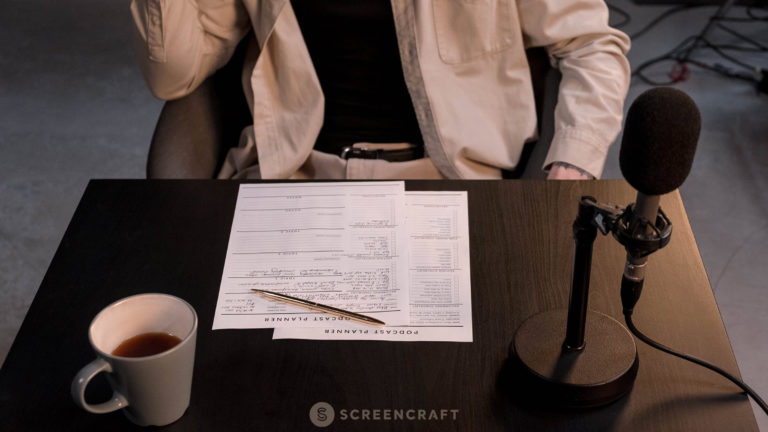
True crime podcast adaptations, like Starz' Gaslit, Hulu's The Dropout, and Apple TV+'s WeCrashed, are having their moment right now. However, Hollywood has taken notice of the surging popularity of well-written fiction podcasts, as well. TV shows like Amazon’s Lore, the upcoming Dirty Diana starring Demi Moore, and FX’s Welcome to Night Vale are just some examples of podcasts that have been adapted for the screen.
If you’re ready to try your hand at writing a fiction podcast and have a story you’d like to serialize in this format, the first thing you need to create is a podcast script.
Podcasting is still a fairly new form of media, so there isn’t a ton of information about podcast script formats. Luckily, we found four great ways to format your podcast script. Here are four distinct ways to format your podcast script and why each option works particularly well for podcasts. Hopefully, you’ll find the podcast script formatting that works for you.
Download or view these fiction podcast script examples:
Table of Contents
- How to Format a Podcast Script: Limetown Episode #101
- Podcast Script Format #2: Love and Luck Episode #99
- BBC Radio Drama Script Format
- BBC Radio Drama Audio Script Format
- How to Format a Podcast Script Like a Movie Screenplay
- What’s the Best Way to Write a Podcast Script?
- The Most Important Part of Writing a Podcast Script
How to Format a Podcast Script: Limetown Episode #101
The script for the Limetown episode is a particularly barebones script example. The main formatting features really only deal with speaking characters and SFX.
The speaking character names are aligned on the left side of the page in all caps. One helpful thing the Limetown script does is put about an inch of space between the character name and the dialogue. Limetown also puts sound effects at the center of the page, in all caps, and underlined to differentiate them from the dialogue. This helps the reader visually identify what exactly is going on and when.
In the example below, the (D) is used to indicate a specific distortion or quality of the dialogue being spoken. Notice that on this page every single line of dialogue has a (D) quality attached to it for the editors. "D-PHONE" for example means to apply a filter to the dialogue to make it sound like a phone call. Your script might not need this much filtering, but it's important to note a shift away from typical audio dialogue.
Podcast Script Format #2: Love and Luck Episode #99
In the Love and Luck script example, the character name, acting directions, and dialogue are all lumped together on the same line. The acting directions (e.g., “Quietly” or “Reassuringly”) are put into brackets. The sound effects also go into brackets (but on their own line). The Limetown script is more reader-friendly thanks to the basic formatting and distinction of SFX and dialogue (SFX are centered, all caps, and underlined).
It's also important to point out that neither of these podcast scripts has a dedicated title page. Love and Luck simply states the episode number and name at the top left of the first page with the date underneath. And unlike the next audio script example on this list, neither the Limetown or Love and Luck scripts include page numbers.
BBC Radio Drama Script Format
While podcasts are their own genre, it makes sense to look at radio drama scripts from the BBC since they are a well-established medium that has been around for nearly 100 years. (The very first radio drama commissioned by the BBC was A Comedy Of Danger, by Richard Hughes, which aired in January of 1924). Since then, the BBC has settled on this specific format.
How to Format a Podcast Script Like a BBC Radio Drama Script in 9 Easy Steps:
- Every script should have a title page with one contact address in the bottom left-hand corner and include a phone number and email address. If you have an agent, you can include that info in the bottom right-hand corner of the page.
- The script pages are numbered (bottom, center) and begin with scene numbers in all caps, underlined, at the center of the page.
- Technical directions begin (also centered) one line below the scene number and include all music and sound effects cues, written in all caps and underlined to differentiate them from the character dialogue. In the BBC’s format guide, they note that “Technical direction should be used sparingly and work with the dialogue.” They also state that music is “only indicated when it is a source cue or performs a function such as a transitional device between scenes.”
- For character names and dialogue, the character name is in all caps on the left side of the page, then, about an inch to the right (similar in the Limetown podcast script) the dialogue starts.
- The BBC has specific terms for “telescoping,” or focusing the sound of the dialogue. This may be helpful as you think about distinguishing dialogue in your own script.
- These voice directions should begin in the dialogue, in parentheses, and in all caps. These include (OFF) which indicates the actor should speak away from the microphone and is the audio equivalent of "off-screen."
- (D) means “distort” and indicates a character who is speaking via a mechanical device like a telephone or radio.
- (CLOSE) indicates that the actor should be in close proximity to their individual microphone giving an intimate feel to the dialogue.
- At the end of the script, it is customary for a BBC radio script to sign-off with “END.” written in all caps at the center of the page.
BBC Radio Drama Audio Script Format
 How to Format a Podcast Script Like a Movie Screenplay
How to Format a Podcast Script Like a Movie Screenplay
Film is a visual medium. That's why screenwriters format film scripts to include visual descriptions. Podcasts and radio plays only focus on what the audience can hear. But that doesn’t mean you can’t write a podcast script in screenwriting software such as Final Draft. The main difference is simply not including anything the camera might see or do. No panning, no close-ups, no dissolves, and no smash cuts. Basically, every effect is a sound effect. You can indicate them with the acronym "SFX."
8 Steps to Formating a Podcast Script Like a Screenplay:
- Similar to a BBC Radio Drama script, audio screenplays should have a dedicated title page, just like a movie script.
- Center the podcast title near the top of the page and underline it.
- The next line is “by” and under that, the name of the scriptwriter (“by” and your name is not underlined). Your name, phone number, and email address go in the bottom left corner of the page.
- Shot headings are known as “slug lines” and begin with either EXT. or INT. (all caps) to indicate if the scene takes place outdoors or indoors. The slug also includes the name of the location, and if it is day or night.
- For a podcast, you don’t have to worry about lighting a night shoot. But the time of day and interior/exterior might be helpful information for a reader to have. Being inside an elementary school at night is going to sound very different than being out on the schoolyard during the day! Adding the location isn’t absolutely necessary (there are no locations listed in the Limetown or Love and Luck podcast scripts – they only include the sounds of the location) but again, this can be helpful to a reader to get oriented in the story.
- Start every new scene with a new slug line.
- Put the page numbers in the upper right-hand corner.
- Center character names on the page in all caps. The dialogue is also at the center of the page to distinguish it from the slug line or sound effects. Typically, the words FADE OUT in all caps are end the screenplay.
What’s the Best Way to Write a Podcast Script?
Each of these script formats has its pros and cons. The first two podcast script examples are easily the simplest formats. They're so straightforward that you can easily format them using Microsoft Word or Google Docs. The cons are simply that the simple format leaves out a bit of world-building information and isn’t terribly reader-friendly.
The BBC Radio Drama format is one of the most reader-friendly options. The title page, scene numbers, and page numbers divide up the scenes, keeping everything organized. By underlining the technical directions and putting them in all caps, it’s very clear to the eye that it’s different from the dialogue. The cons are that the reader has limited information about the world they are in, relying only on exposition in the dialogue or sound effects.
The biggest pro of writing a podcast in the traditional film screenplay format is that the reader has more information. Screenplays set the scene. They also typically set the time of day. Another pro is that if the writer is familiar with screenplay format and already has the software, it’s simply easier to use and you don’t have to worry about what gets capitalized, etc. The software automatically does it for you. Also, screenplays are conveniently formatted so that each script page equals one minute of screen time – or in this case, podcast time. The cons of a screenplay-style podcast script are that you may need to format more information than is necessary to tell your story.
The Most Important Part of Writing a Podcast Script
No matter which format you choose, always keep your reader in mind.
Just like crafting a movie script, a podcast script is first meant to be read – whether it’s for a casting call or trying to get a producer or sound engineer involved in your podcast. They will all need to read it before you can move on to the recording phase. Typos and careless or inconsistent formatting distract from the story, so always give it a good proofread.
Whichever format you choose, make sure it’s clear. The reader should always know what's happening, who is speaking, and what specific sounds they're hearing. Have fun podcasting!
Tags
Get Our Screenwriting Newsletter!
Get weekly writing inspiration delivered to your inbox - including industry news, popular articles, and more!

